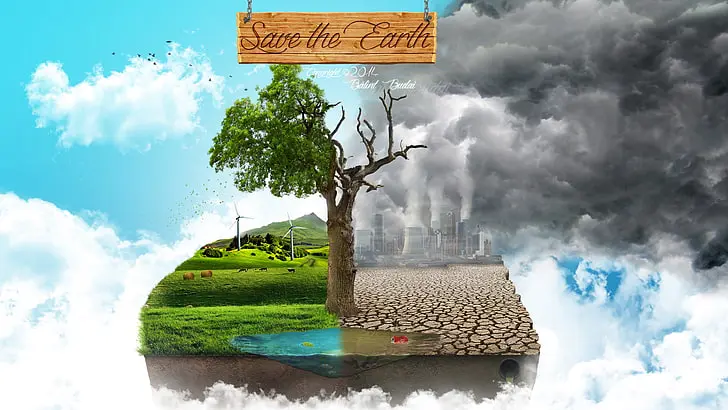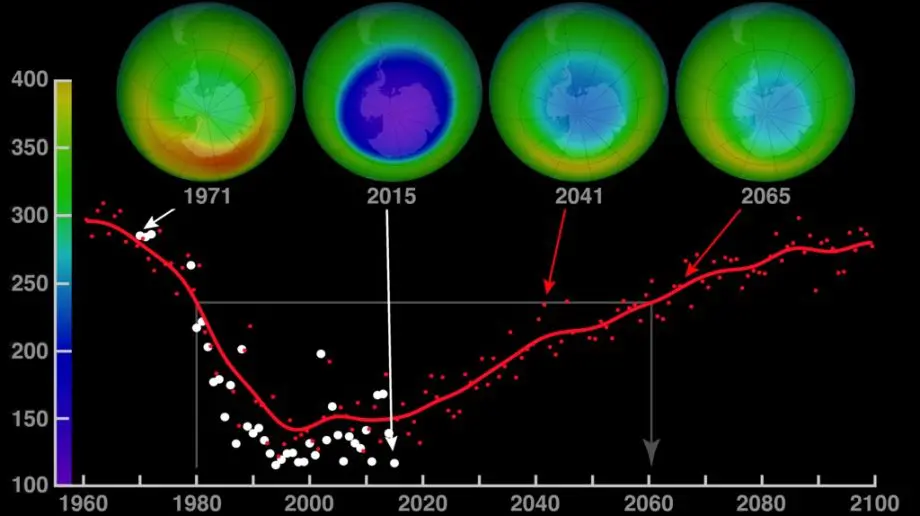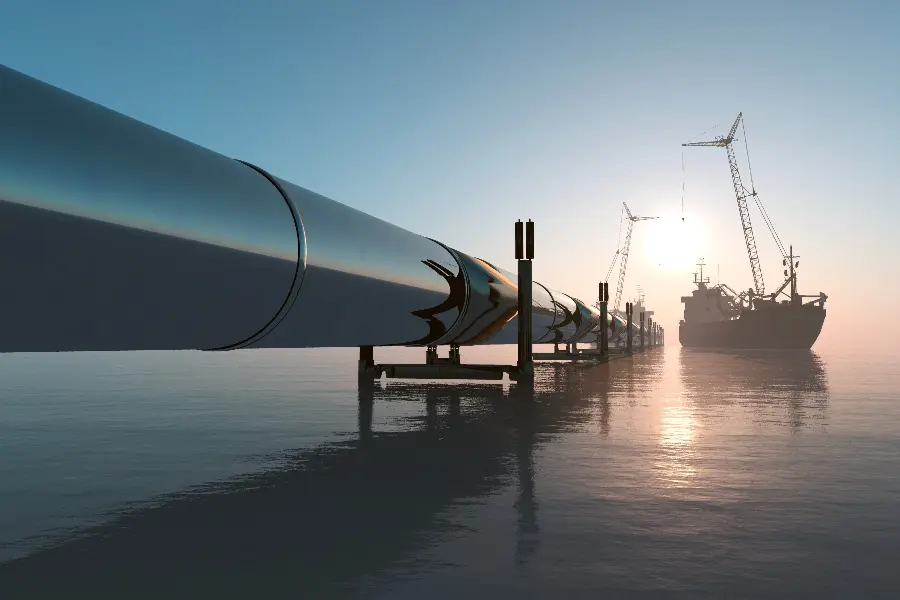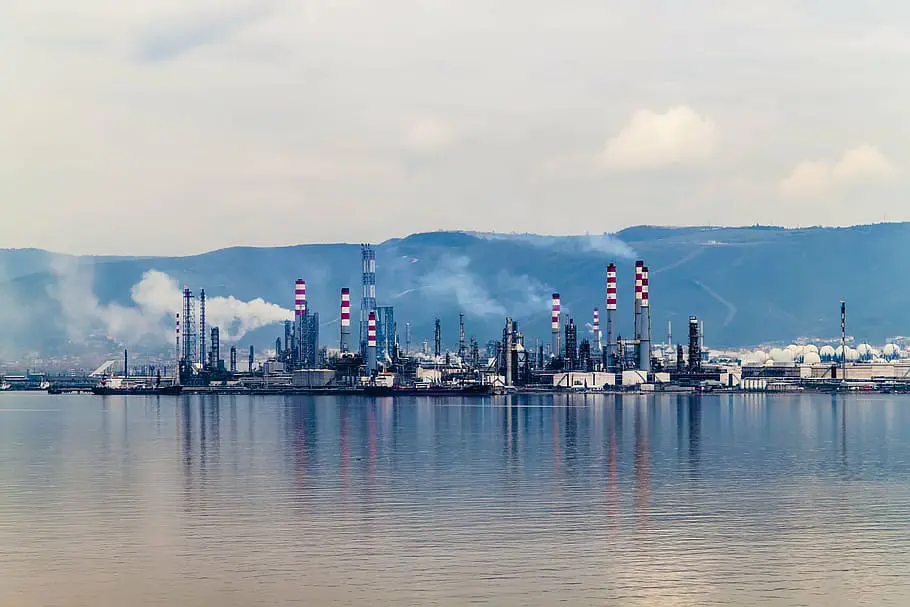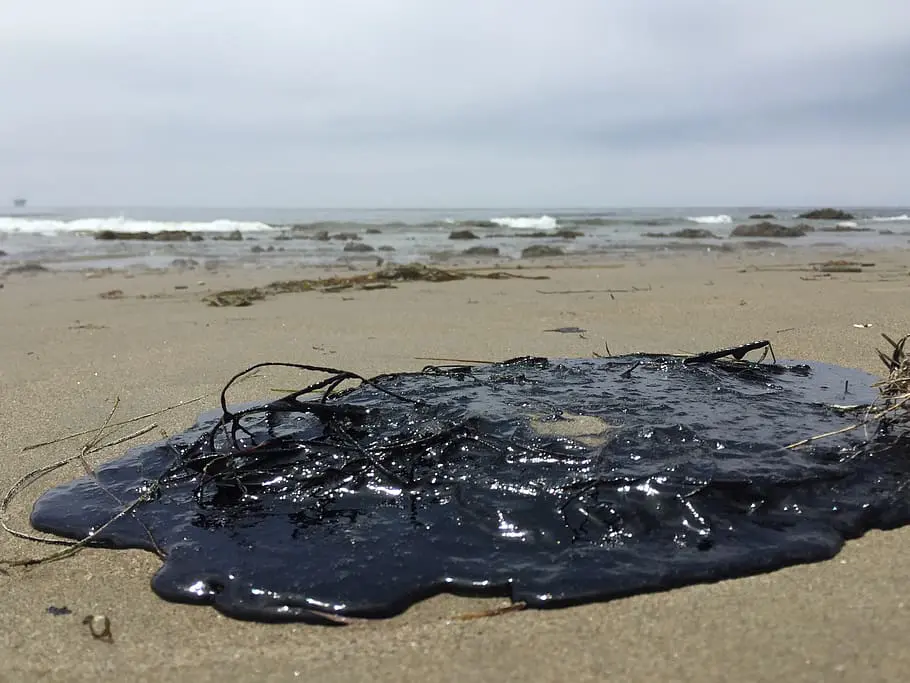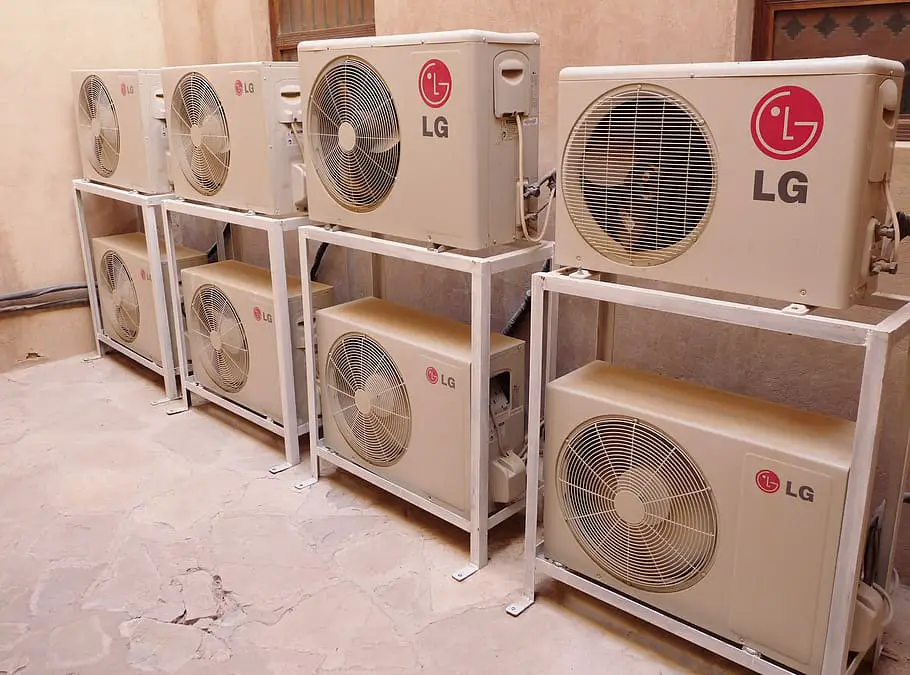
Today let’s unravel the mystery: ‘Is climate change the same as global warming?’ Dive into our friendly guide to understand these crucial environmental terms.
Ever found yourself scratching your head, wondering, ‘Is climate change the same as global warming?’ You’re not alone!
These terms often pop up in our daily news, stirring up a whirlwind of discussions.
In our journey today, we’ll untangle these concepts, shedding light on their meanings, and differences, and why understanding them is vital for our planet’s future.
Is Climate Change the Same as Global Warming?
Is climate change the same as global warming? It’s a common question and one that deserves a clear answer.
In this blog post, we’ll delve into these two environmental buzzwords, exploring their definitions, differences, and the significant roles they play in our world.
We’ll also touch on the causes and effects of both, human influence, and strategies to address these global issues.
So, let’s dive in and demystify these crucial terms together!
Brief Overview of the Topic
Let’s kick things off by setting the stage. When we talk about climate change and global warming, we’re venturing into the realm of Earth’s atmosphere, weather patterns, and temperatures.
These two terms have become hot topics (no pun intended!) in recent years, often making headlines and sparking debates worldwide.
But what do they really mean? And how do they relate to our everyday lives and the future of our planet? That’s exactly what we’re here to explore.
Importance of Understanding the Difference Between Climate Change and Global Warming
Now, you might be wondering, Why does it matter if I know the difference between climate change and global warming?
Well, understanding these terms is like having a roadmap to navigate the complex world of environmental science.
It helps us grasp the challenges our planet is facing and the role we play in these global phenomena.
Plus, it empowers us to engage in informed conversations, make environmentally conscious decisions, and contribute to solutions in our own ways.
So, knowing the difference between climate change and global warming isn’t just about mastering scientific jargon it’s about being an informed citizen of Earth.
Defining the Terms
Alright, now that we’ve set the stage, let’s get down to the nitty-gritty. It’s time to define our key players: global warming and climate change.
You’ve probably heard these terms thrown around a lot, but what do they really mean? And how do they differ from each other?
Let’s pull out our environmental dictionary and get those definitions crystal clear.
Trust me, it’s going to make understanding the rest of this journey a whole lot easier!
Definition of Global Warming
Let’s start with global warming. When we say ‘global warming’, we’re talking about the long-term increase in Earth’s average temperature.
Picture it like this: Earth is wrapped in a blanket of gases (our atmosphere), which keeps us warm enough to sustain life.
But when we add more heat-trapping gases to this blanket (think carbon dioxide and methane), it gets thicker and holds in more heat. This is essentially what’s happening with global warming.
It’s like turning up the thermostat on our planet, leading to a gradual increase in our global temperature.
Definition of Climate Change
Now, let’s move on to climate change. This term is a bit broader.
While global warming refers specifically to temperature increases, climate change encompasses a wider range of changes.
It includes shifts in things like rainfall patterns, sea levels, and the frequency of extreme weather events.
Think of climate as the rhythm of the Earth and its regular patterns and variations, and climate change as a shift in that rhythm.
It’s like Earth is changing its tune, and these changes can have significant impacts on our environment and our lives.
The Difference Between Global Warming and Climate Change
Now that we’ve got our definitions down, let’s dive into the heart of the matter: the difference between global warming and climate change.
It’s easy to use these terms interchangeably since they’re both about changes to our planet’s environment, right?
But as we’ll see, these two terms have distinct meanings and implications.
Understanding the difference is like having a secret decoder ring for environmental science.
So, let’s decode the mystery and explore how global warming and climate change are similar, how they’re different, and why it all matters.
How the Terms are Used Interchangeably and Why This Can Be Misleading
It’s not uncommon to hear people use ‘global warming’ and ‘climate change’ interchangeably.
After all, they’re both about changes to our planet’s environment, right?
Well, yes and no. While they’re closely related, using them as synonyms can lead to confusion.
Here’s why: global warming is a cause, while climate change is an effect.
Global warming refers specifically to the rise in Earth’s average temperature due to increased levels of greenhouse gases.
Climate change, on the other hand, is the broader shift in long-term weather patterns and conditions that this warming causes.
So, while they’re part of the same story, they’re different chapters.
Using them interchangeably can blur these distinctions and oversimplify the complex processes at work.
Detailed Comparison of the Two Terms
Now, let’s take a closer look at how global warming and climate change compare.
As we’ve mentioned, global warming is all about temperature. It’s the long-term heating of the planet.
This warming is primarily caused by human activities, especially the burning of fossil fuels, which increases the concentration of greenhouse gases in the atmosphere.
Climate change, on the other hand, is a broader term. It includes not only the warming of our planet but also the ‘knock-on’ effects of this warming.
These effects include changes in rainfall patterns, rising sea levels, shifts in plant and animal habitats, and increased frequency of extreme weather events, to name just a few.
So, while global warming is a major issue, it’s just one piece of the climate change puzzle.
It’s the spark that sets off a chain of changes, altering our planet’s climate in complex and interconnected ways.
Understanding the difference between these two terms helps us grasp the full scope of the challenges we face and the urgent need for action.
Although people tend to use these terms interchangeably, global warming is just one aspect of climate change. “Global warming” refers to the rise in global temperatures due mainly to the increasing concentrations of greenhouse gases in the atmosphere. “Climate change” refers to the increasing changes in the measures of climate over a long period of time – including precipitation, temperature, and wind patterns. From USGS
Causes and Effects
Having distinguished between global warming and climate change, let’s delve deeper into the causes and effects of these two environmental phenomena.
It’s like peeling back the layers of an onion, each layer reveals something new and interconnected.
From the greenhouse gases that drive global warming to the ripple effects of climate change on our weather patterns and ecosystems, we’ll explore how these processes are set in motion and the impacts they have on our planet.
So, grab your detective hat, and let’s investigate the causes and effects of global warming and climate change!
Causes of Global Warming
Let’s start with the causes of global warming. The main culprit? Greenhouse gases.
These gases, which include carbon dioxide, methane, and nitrous oxide, trap heat from the sun in Earth’s atmosphere, leading to a rise in global temperatures.
The primary source of these gases is human activity, particularly the burning of fossil fuels like coal, oil, and gas for energy.
Deforestation also plays a role, as trees absorb carbon dioxide, so when they’re cut down, more of this gas remains in the atmosphere.
Effects of Global Warming
The effects of global warming are wide-ranging and significant. As Earth’s temperature rises, we’re seeing a host of changes.
Glaciers and ice caps are melting, leading to rising sea levels. Warmer temperatures also mean more heatwaves and droughts, as well as increased intensity of hurricanes.
These changes can disrupt ecosystems, affect wildlife, and even pose risks to human health and livelihoods.
Causes of Climate Change
While global warming is a key driver of climate change, it’s not the only factor.
Climate change can also be influenced by natural factors like volcanic eruptions and variations in solar radiation.
However, the current trend of rapid, unprecedented climate changes is largely driven by human activities, primarily through the release of greenhouse gases into the atmosphere, but also through changes in land use and deforestation.
Effects of Climate Change
Climate change brings about shifts in long-term weather patterns and increases in extreme weather events.
This can mean more frequent and severe droughts, floods, and storms.
It can also lead to shifts in seasons, disrupting agriculture and ecosystems.
Rising sea levels can lead to coastal flooding and erosion.
And these changes can have serious impacts on human health, food and water supplies, and economic stability.
The Role of Human Activity
Human activity plays a central role in both global warming and climate change.
Our reliance on fossil fuels for energy, our deforestation practices, and our land use changes are all driving up levels of greenhouse gases in the atmosphere, leading to global warming and, in turn, climate change.
The choices we make, how we generate energy, how we use land, how we travel, and what we eat have a direct impact on these global processes.
And that means we also have the power to make a difference.
How human activities contribute to global warming and climate change
Having explored the causes and effects of global warming and climate change, it’s time to turn the spotlight on us, humans.
Our actions and choices have a profound impact on our planet, and it’s important to understand how we’re contributing to these environmental changes.
From the energy we use to the food we eat, our everyday activities have far-reaching effects.
But don’t worry, this isn’t all doom and gloom! By understanding our role, we can also find ways to make positive changes.
So, let’s take a closer look at how human activities contribute to global warming and climate change, and what we can do about it.
The Impact of Greenhouse Gases
Greenhouse gases are the main drivers of global warming. These gases, which include carbon dioxide, methane, and nitrous oxide, act like a thermal blanket for the Earth.
They trap heat in the atmosphere and prevent it from escaping into space.
This process, known as the greenhouse effect, is natural and necessary for life on Earth.
However, human activities, particularly burning fossil fuels and deforestation, have significantly increased the concentration of these gases in the atmosphere.
This enhanced greenhouse effect is causing the Earth’s average temperature to rise, leading to global warming.
The impact of these gases extends beyond just temperature.
They’re also causing changes in weather patterns, rising sea levels, and increased frequency of extreme weather events, all hallmarks of climate change.
Addressing Global Warming and Climate Change
Addressing global warming and climate change requires a two-pronged approach: mitigation and adaptation.
Mitigation involves reducing the flow of greenhouse gases into the atmosphere by cutting down on fossil fuel use, switching to renewable energy sources, improving energy efficiency, and enhancing natural carbon sinks like forests.
Adaptation involves adjusting to current and future climate changes through measures like building flood defenses, adopting climate-smart agricultural practices, and designing sustainable, resilient cities.
It’s important to note that addressing these issues isn’t just the responsibility of governments and corporations.
Each of us has a role to play in reducing our carbon footprint and making sustainable choices in our daily lives.
Brief overview of strategies to mitigate global warming and climate change
Now that we’ve explored how human activities contribute to global warming and climate change, let’s shift gears and talk about solutions.
Yes, the challenges are significant, but so are the opportunities for action.
From renewable energy to sustainable agriculture, there are strategies we can employ to mitigate these environmental changes.
In this section, we’ll provide a brief overview of these strategies, offering a glimmer of hope and a roadmap for action in the face of these global challenges.
So, let’s roll up our sleeves and explore how we can make a positive impact on our planet’s future.
Strategies to fight global warming and climate change
Here are some strategies that can help mitigate global warming and climate change:
Switch to Renewable Energy: One of the most effective strategies is to reduce our reliance on fossil fuels and increase the use of renewable energy sources like solar, wind, and hydroelectric power. These sources produce energy without releasing greenhouse gases.
Improve Energy Efficiency: We can reduce our energy demand by making our homes, vehicles, and industries more energy-efficient. This can range from simple steps like using energy-saving light bulbs to more complex measures like improving insulation in buildings and designing more fuel-efficient cars.
Sustainable Agriculture: Farming practices can have a big impact on greenhouse gas emissions. By adopting sustainable agricultural practices, such as organic farming, agroforestry, and permaculture, we can reduce these emissions and even capture carbon from the atmosphere.
Reforestation and Afforestation: Trees absorb carbon dioxide, so planting more trees and preserving existing forests can help to reduce greenhouse gases in the atmosphere.
Carbon Pricing: Implementing economic measures like carbon taxes or cap-and-trade systems can provide financial incentives for businesses and individuals to reduce their carbon emissions.
Public Transportation and Cycling: Using public transportation, cycling, or walking instead of private cars can significantly reduce carbon emissions. For longer distances, high-speed rail could be a more sustainable alternative to flying.
Waste Management: Reducing waste, recycling, and composting can decrease the amount of waste that ends up in landfills, where it produces methane, a potent greenhouse gas.
Education and Advocacy: Informing people about climate change and how their actions can make a difference is a crucial part of the solution. Advocacy can also lead to policy changes that promote sustainability.
Remember, every little bit helps. Even small changes in our daily lives can add up to make a big difference.
Is Climate Change the Same as Global Warming? FAQs
Alright, we’ve covered a lot of ground so far! But you might still have some burning questions about global warming and climate change.
Don’t worry, you’re not alone. In fact, there are a few questions that pop up quite often.
So, we’ve gathered these frequently asked questions (FAQs) to quench your curiosity.
Let’s dive into these common queries and clear up any lingering confusion!
Q: Is global warming worse than climate change?
A: It’s not quite accurate to say that one is worse than the other, as they’re closely related but represent different aspects of the same issue.
Global warming refers to the long-term increase in Earth’s average temperature, largely due to human activities like burning fossil fuels.
Climate change, on the other hand, encompasses the broader changes this warming causes in global weather patterns and ecosystems.
Both pose significant challenges and are interconnected, so it’s crucial to address them together.
Q: Can we stop global warming and climate change?
A: While we can’t completely stop global warming and climate change, we can significantly mitigate their impacts.
This involves reducing greenhouse gas emissions, transitioning to renewable energy, improving energy efficiency, and adopting sustainable practices in areas like agriculture and waste management.
It’s a big task, but with a concerted global effort, we can slow the rate of global warming and help our societies adapt to the changes that are already happening.
Q: What can individuals do to help?
A: Individuals can make a big difference! Here are a few ways you can help:
• Reduce, Reuse, Recycle: Minimize waste and conserve resources.
• Energy Efficiency: Use energy-efficient appliances and light bulbs, and consider renewable energy options for your home.
• Sustainable Transportation: Walk, bike, or use public transportation when possible. Consider purchasing a hybrid or electric vehicle.
• Conscious Consumption: Buy less and choose products with less packaging. Consider the environmental impact of the products you buy.
• Plant Trees: Trees absorb carbon dioxide, helping to reduce the amount of greenhouse gases in the atmosphere.
• Advocate: Support policies and companies that are environmentally friendly, and educate others about climate change and global warming.
Is Climate Change the Same as Global Warming? Conclusion
As we approach the end of our journey exploring the question, Is climate change the same as global warming it’s time to take a moment to reflect on what we’ve learned.
We’ve navigated through definitions, causes, effects, and even strategies to address these global issues.
But our exploration doesn’t have to end here. The conclusion of this post can be the beginning of your personal journey toward environmental consciousness and action.
So, let’s wrap things up and look ahead to the positive changes we can all make for our planet’s future.
Recap of the Main Points
We’ve covered a lot of ground in this post, so let’s revisit the key takeaways.
We started by defining our terms: global warming refers to the long-term increase in Earth’s average temperature, primarily due to human activities like burning fossil fuels.
Climate change, on the other hand, is a broader term that encompasses the various changes this warming causes in global weather patterns and ecosystems.
We then explored the causes and effects of both global warming and climate change, highlighting the central role of greenhouse gases and their wide-ranging impacts on our planet.
We also discussed the significant role human activities play in these processes, from the energy we use to the food we eat.
Finally, we looked at strategies to address global warming and climate change, including switching to renewable energy, improving energy efficiency, adopting sustainable agricultural practices, and more.
We also addressed some frequently asked questions to clear up common misconceptions and provide further insights.
Importance of Addressing These Issues
Understanding the difference between global warming and climate change isn’t just an academic exercise, it’s crucial for our future.
These environmental changes pose significant challenges, from rising sea levels to extreme weather events, and they affect every aspect of our lives, from the food we eat to the homes we live in.
But while the challenges are significant, so too are the opportunities for action.
By understanding these issues, we can make informed decisions and take steps to reduce our impact.
We can advocate for policies that protect our planet, support companies that prioritize sustainability, and make changes in our own lives to reduce our carbon footprint.
Read more: How To Measure Air Ppluton At Home

